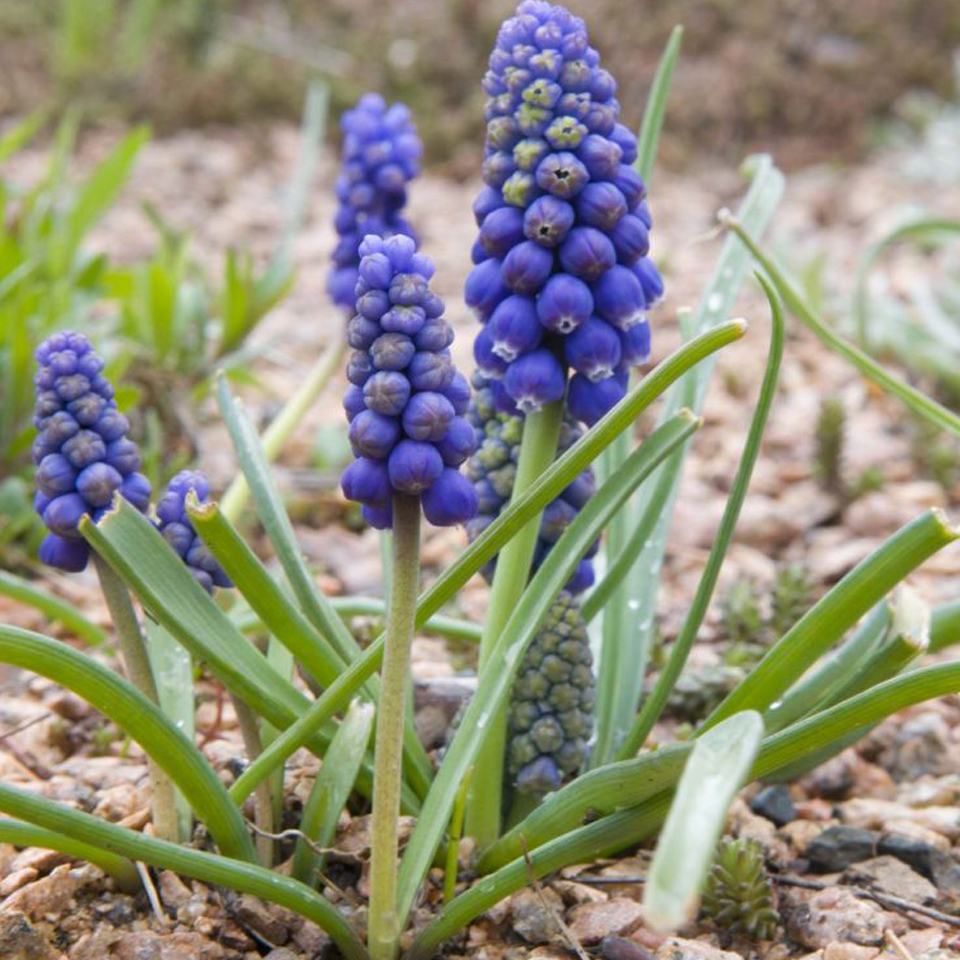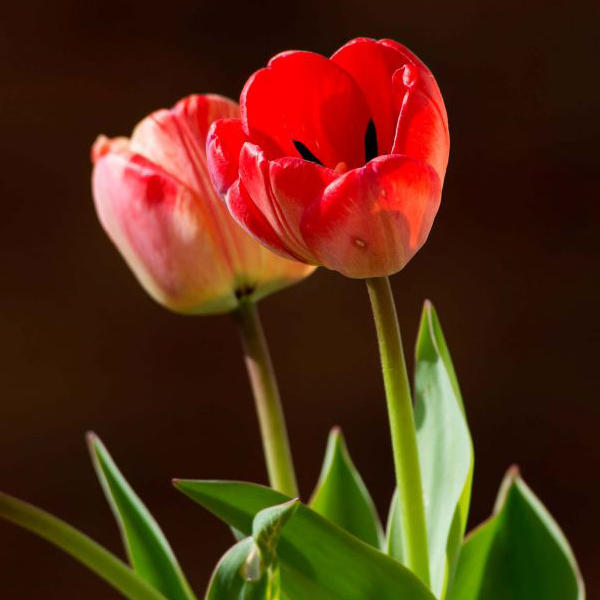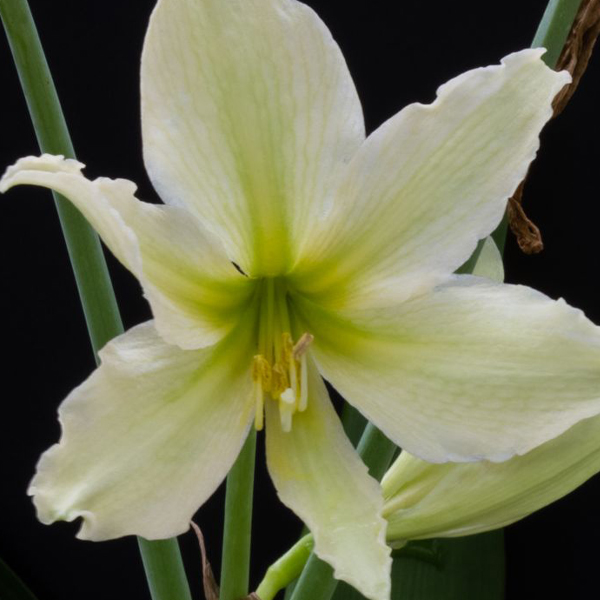The winter holidays are over and cold weather has settled in. It’s that time of year when a gardener’s thoughts turn to spring, but planting season is months away. What can you do? Grow some spring-blooming bulbs indoors right now, says Tim Pollak, the Garden’s outdoor floriculturist.
“I like forcing tulips for Valentine’s Day,” Pollak said.“Nothing breaks the winter blues more than a pot of blooming tulips.” Pollak and his team have planted more than 11,000 spring-flowering bulbs in 1,665 pots, many of which will be displayed outdoors at the Garden come April. But right now, for a little winter cheer in your home or office, you can buy pots of tulips, daffodils, hyacinths, and other bulbs at garden centers, stores, and online.
The Big Chill
Commercial growers place bulbs in chilled coolers to create winter-like conditions, which some bulbs, like daffodils and tulips, need before they’ll bloom. Once they are potted and sent to stores, they quickly sprout leaves followed by flowers for a bit of instant gratification long before spring. “The Garden’s three new walk-in coolers allow me to play with forced tulips in a way we haven’t done before. We can have varieties of tulips that bloom early, mid-, and late-season,” Pollak said.
From the time they push up leaves, the bulbs may take two to four weeks or more to flower. When you bring the pots home, give them about two weeks of indirect sunlight and cool temperatures, if possible. When the leaves are 3 to 5 inches tall, move the pots to a warmer spot and a bright, sunny window. Once flower buds develop, move the pot to a place with indirect light, which will prolong the bloom period. Here are a few of Pollak’s favorites:

Daffodils
Daffodils are among the easiest bulbs to grow indoors. They range in size from 6 inches to more than a foot tall. “I teach a lot of dish garden classes,” Pollak said. “I like ‘Tete-a-Tete’ (Narcissus ‘Tete-a-Tete’) daffodils in dish gardens because they don’t overpower the other plants.” This diminutive, buttery yellow heirloom daffodil is lightly fragrant and blooms for ten days or more.

Hyacinths
“Hyacinths are some of my favorites,” Pollak said. “They have outstanding fragrance that fills the room.” Grown indoors in January, they typically bloom from Valentine’s Day to late February. Each bulb produces thick succulent leaves and a central spike of tight flower clusters. Water around the inside edge of the pot to avoid getting the leaves wet. The soil should be moist, but not waterlogged, which can cause the bulbs and roots to rot.

Grape Hyacinth (Muscari)
“Muscari may be a little harder to find in January, but it’s more unusual,” Pollak said. “They’re different and offer several colors—white, blue, and shades of soft, shell pink. Muscari are good for dish gardens and their foliage lasts a long time.” And the flowers sometimes have a faint fragrance of bubblegum. Some growers offer combination pots of daffodils or tulips with grape hyacinths.
Tulips
“These colorful flowering jewels are as special as roses in winter. Once the flower bud emerges, move the pot into direct sunlight in a cool room if possible. After the flowers open, move the pots anywhere indoors. The cooler the air temperature, the longer the flowers will last.
Amaryllis
Amaryllis bulbs do not need chilling. They’re sold as gift plants during the holidays, but come January they’re often on sale. “Planting one now brings a great surprise for February,” Pollak said. “And you can keep them indefinitely. I have one that’s nine years old and has multiplied. It usually blooms by Valentine’s Day.”
Recycle, Reuse the Bulbs
Once they’re finished blooming, daffodils, hyacinths, and Muscari bulbs can be saved and planted in the garden for bloom next year. Exceptions are paperwhite daffodils, which are not hardy in our area, and tulips, which are typically spent. You can try replanting tulip bulbs this spring in an area outdoors that will remain fairly dry throughout the year. Or, brush off the soil and spent leaves and store the bulbs in a paper bag until fall when you can replant them.
For all bulbs forced indoors, allow the stems and foliage to continue growing, which produces energy in the bulb for next year’s flowers. “Once they’ve finished blooming indoors, let the foliage die back and keep the pots in a cold—but not freezing—spot,” Pollak said. “They’ve spent their energy blooming indoors this year, but they’ll bloom again the following winter.” When the leaves turn yellow, stop watering. When the leaves are completely dry, give a little tug and they’ll come away from the bulbs.
Pollak recommends keeping the pots in the garage for several weeks or in a protected spot next to a building. “Leave the bulbs in the pots,” he said. “If you put the pots outside, you could cover them with leaves.” The goal is to gradually acclimate the bulbs to freezing temperatures before you transplant them into the garden come March or April.
Nina Koziol is a garden writer and horticulturist who lives and gardens in Palos Park, Illinois.



